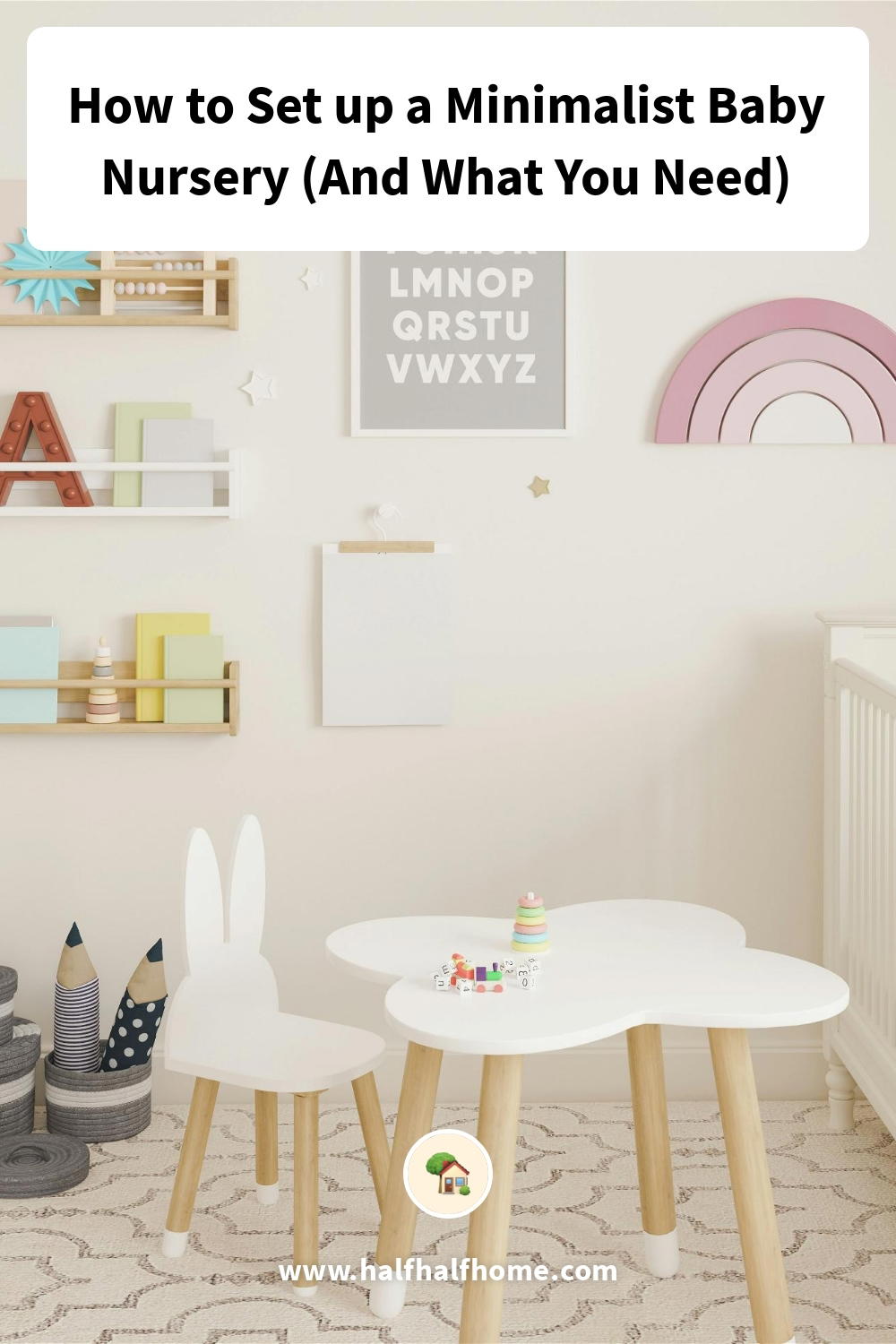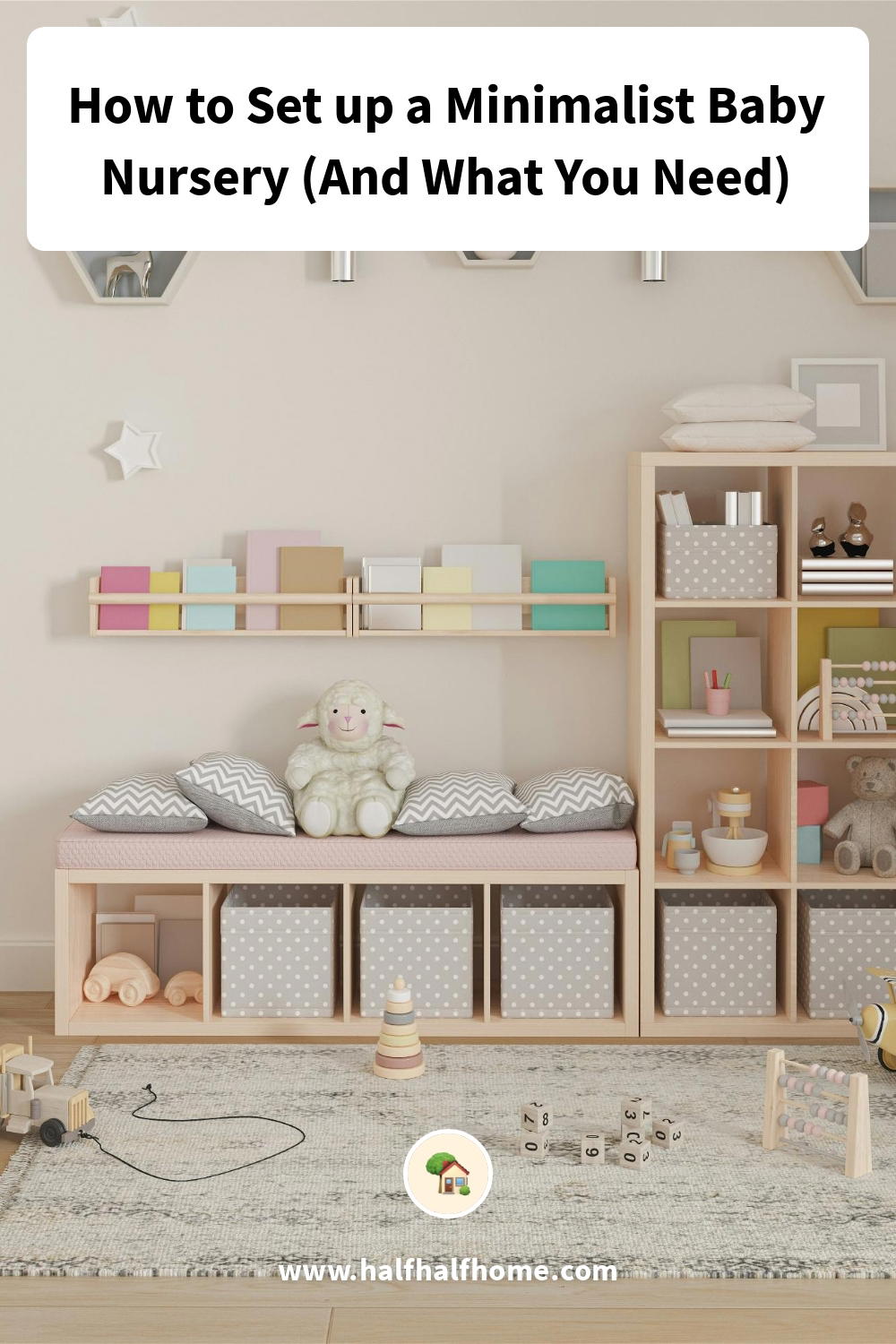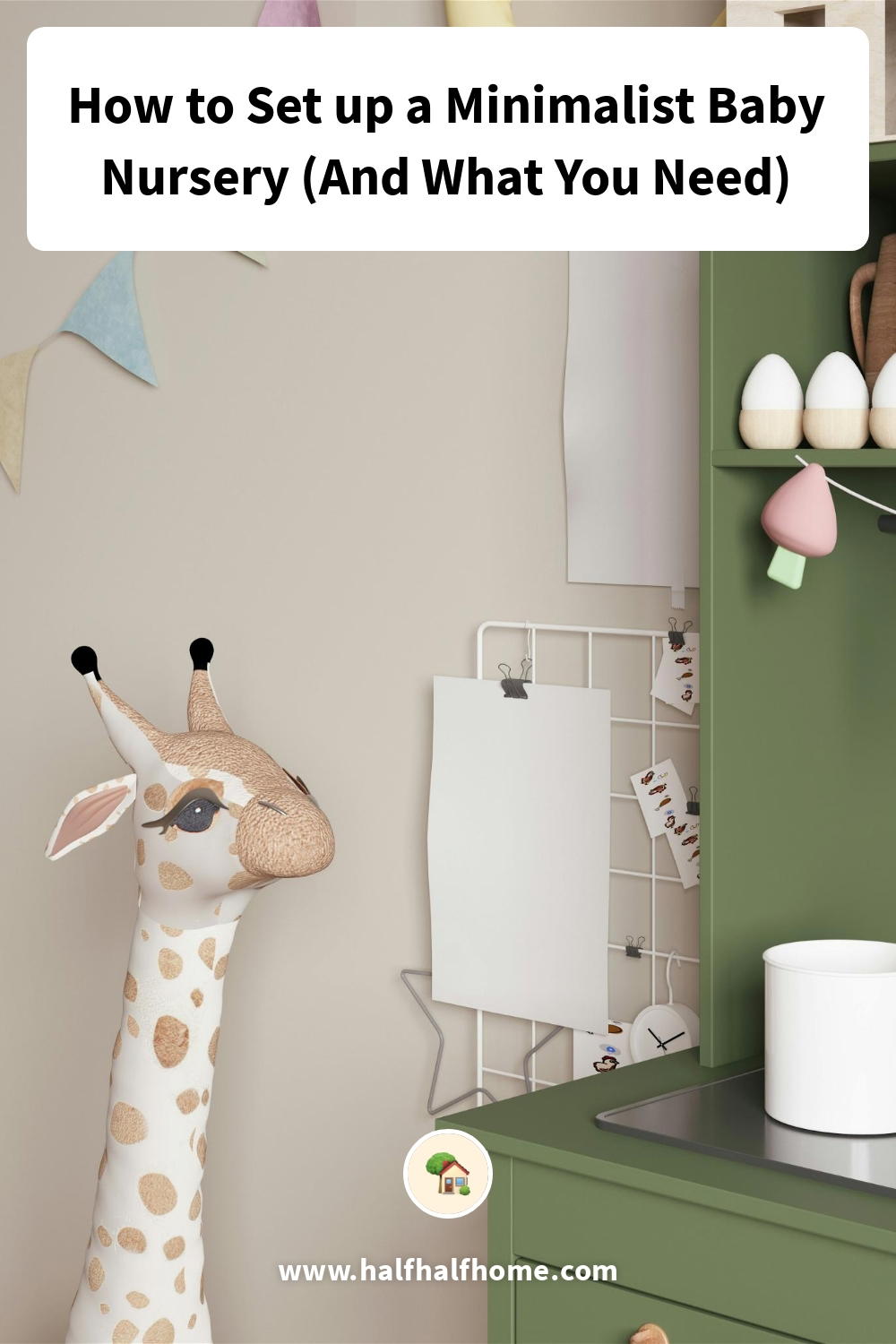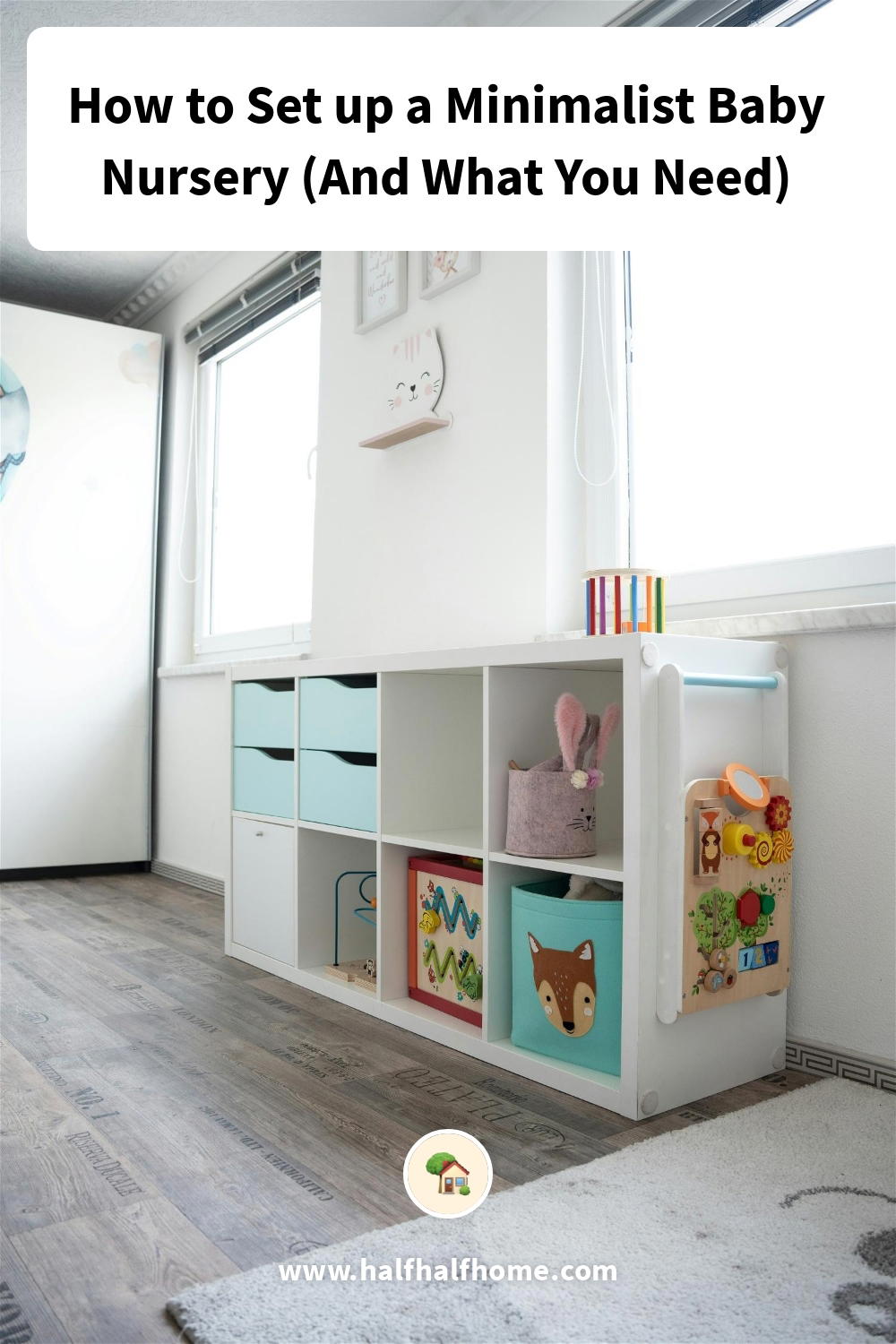How to Set up a Minimalist Baby Nursery (And What You Need)

Setting up a minimalist baby nursery is harder than it looks. Use my experience and what I did with my nursery setup, to create a minimal baby room for your newborn.
This article may contain affiliate links. We earn a small commissions when you purchase via those links — and it's free for you. It's only us (Becca & Dan) working on this website, so we value your support! Read our privacy policy and learn more about us.
When we were expecting our baby, and when we first brought her home, I had dreams of a minimalist nursery like the ones I saw on Pinterest.
I followed Instagram accounts like Babyletto and Pottery Barn Kids so that I could scroll and see photos of cute picture-perfect baby rooms and nurseries. In my head, I went through what we had, and how we could set it up for a bright and airy nursery.
In practice, and for anyone who’s not a professional nursery stylist, we wound up with a realistic baby room that did the trick, but was not ready for a magazine. We were fine with it, and developed some tips we can share with you about how to make a nursery minimal.
Key takeaways in this guide
- Use only the amount of furniture you absolutely need, and get rid of what’s not in use.
- Use matching types of furniture with a theme, and have finishes stay consistent, while avoiding loud patterns.
- Put furniture and baby products for the future into storage in the closet to get them out of sight.
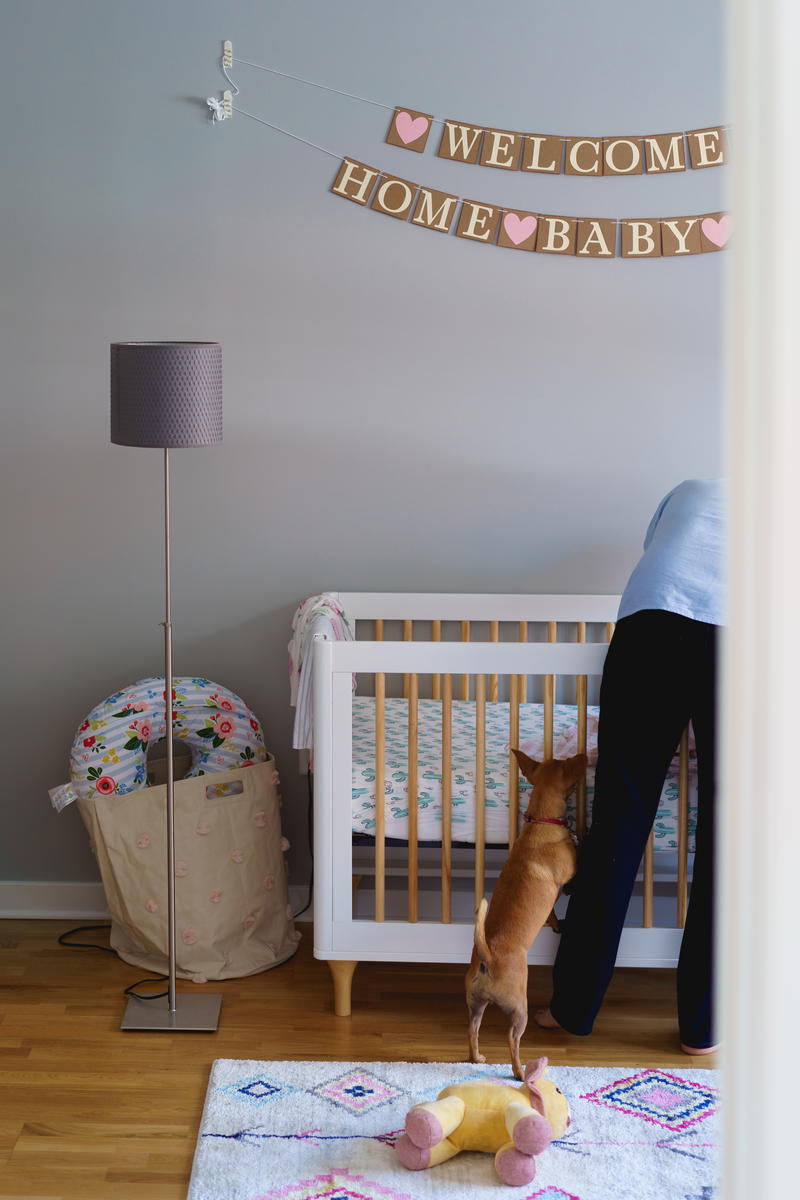
Avoid hoarding furniture (use just the basics)
Before I had a baby, I knew babies needed a lot of stuff. The more I talked to veteran parents, though, they told me, “Take a step back. Babies really only need the basics. They don’t care about the rest.”
This means that you don’t need a nursery with a lot of useless fluff. You only need what a newborn really needs. For me, I noticed that this was the following:
- Our crib (and bassinet)
- A dresser with a changing table (and a changing pad — the Keekaroo Peanut)
- A bookshelf (but we could’ve gone without this for months because newborns don’t read much)
- A Diaper Genie
- A collapsible hamper
- A rocking chair (but we put ours in the living room of our apartment)
- A plant (optional)
- Baby monitor
That’s it, if you want a minimalist nursery.
(In this photo, you’ll see our minimalist nursery starter pack — this is from the day we moved apartments within our building and got to re-envision our nursery again!)
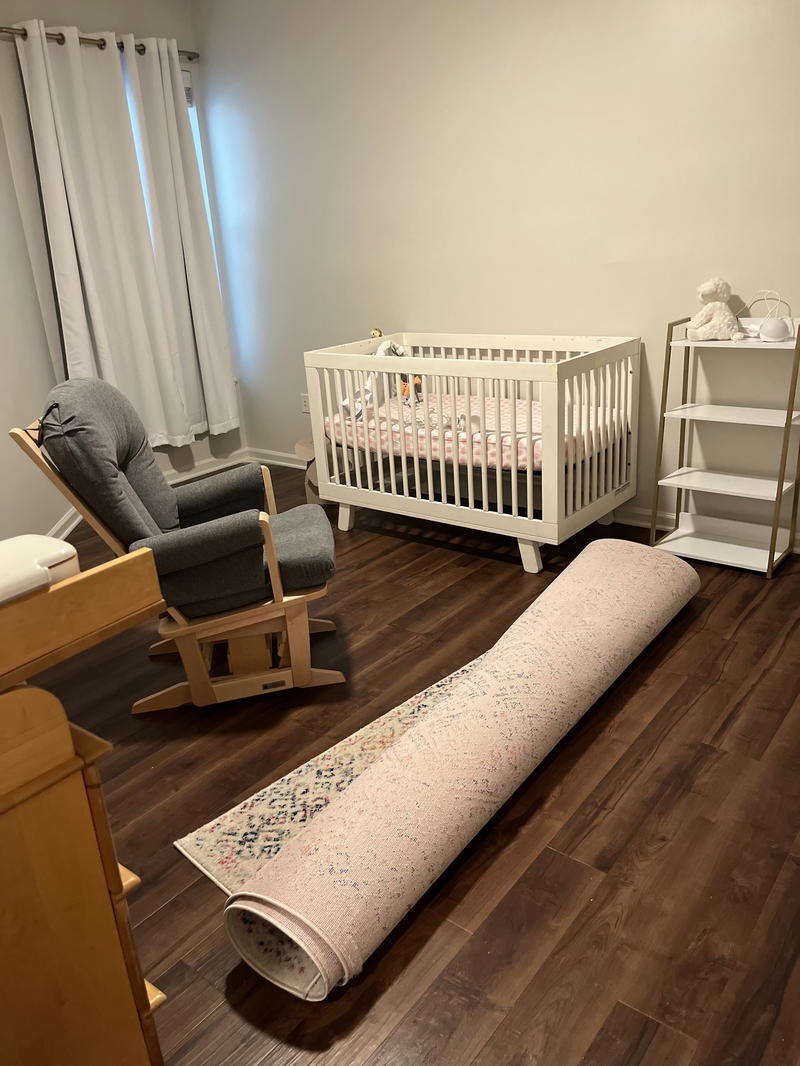
Go through some iterations
The first hack at a setting up a nursery may not be your last. For us, the truth is that for 4 months, until our baby slept in her nursery alone in the crib, our nursery was a changing station and a bit of a storage room.
We had a pile of baby gifts along the wall, and the changing table along the other wall. We kept a lamp on dim for the entire night, because (if you don’t already know, or you’ll soon find out) newborns wake up 3-4 times a night.
We didn’t set up the crib until we got it out of storage, when she was about 4 months old.
Living in an apartment gave us a dab less flexibility than our friends who had houses with more bedrooms, but we knew that eventually we’d get her nursery to its minimal and excellent status.
By iterating our baby nursery through multiple versions, with some furniture shuffles and rearranging of lamps, plants and the changing dresser, we made the room work for our needs at every phase of babyhood.
(In the photo below, we eventually had transformed our nursery into a post-newborn room, so as you can see, a nursery turns out to be a constant work in progress)
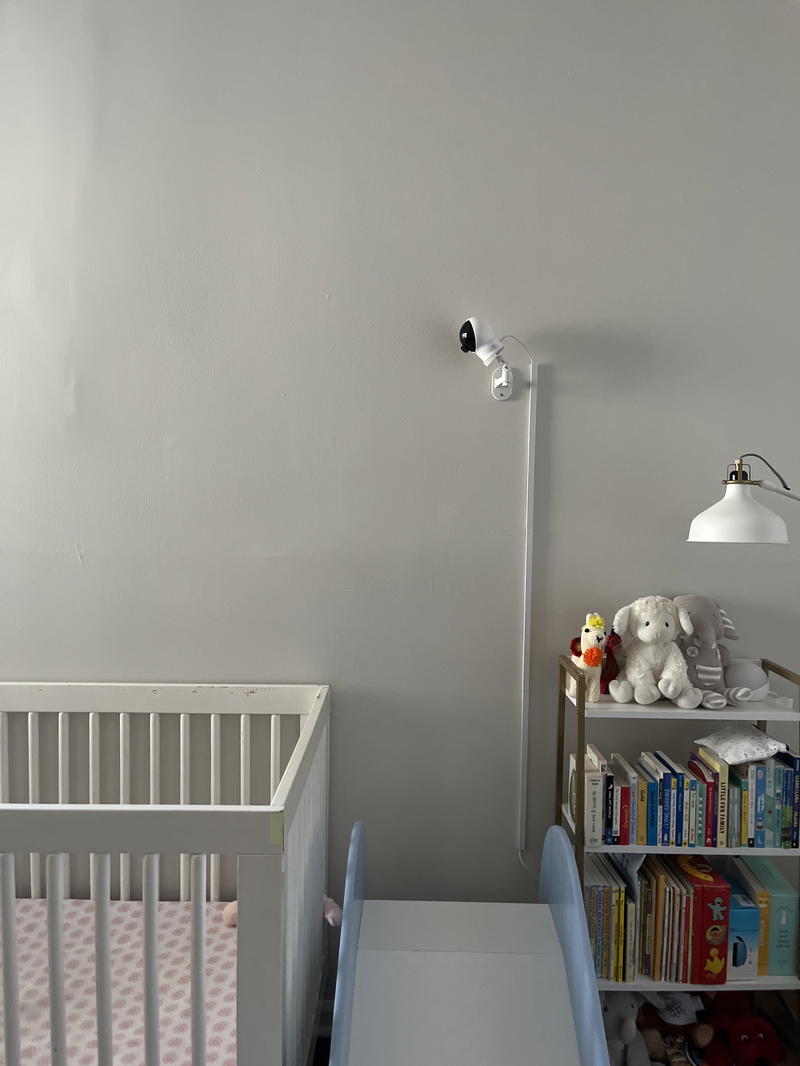
Make everything match
I’m very visual, so if a room has too many styles of furniture that don’t match, it drives me a little crazy.
We were lucky that we got a lot of our nursery furniture as hand-me-downs from family, and we were even luckier that it was all very agreeable styles that worked together.
We have a modern white crib, a medium-wood dresser, a white and brass bookshelf and then the odds and ends of a white diaper pail, patterned hamper and brass lamp.
With a lightly patterned rug and white walls, there’s very little busyness or extraneous things that don’t “go” with the others.
To be minimal, work along one style of furniture, so that nothing seems out of place. Another recommendation of mine is that if you have any metals in your furniture, go along one metallic finish (bronze, chrome, nickel or black matte) to create cohesion.
(In this photo, we were setting up the crib after 4 months of bassinet use)
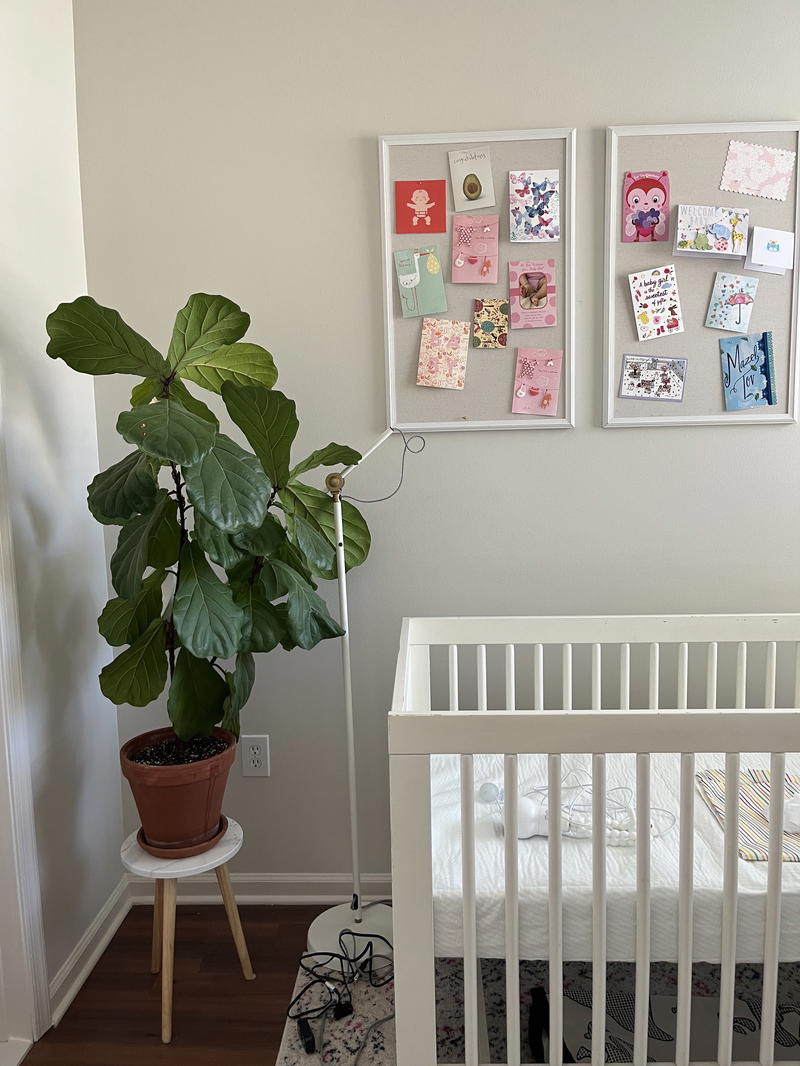
Looking for a rug in a jiffy? We had luck with the area rugs from Quince, detailed in my Quince rug review. They even curated a rug collection for baby and kid rooms.
Get rid of the unnecessary things
If you want to enter your baby’s nursery and not see things that he or she will be using when they’re 2 years old, put them out of sight.
This also goes for basics like the crib: If your child isn’t sleeping in a crib yet, and many babies sleep in a bassinet until 3 or 4 months, then only set it up when you plan to move your child into it for sleeping.
One thing we got rid of within two months was the Graco Simple Sway baby swing. It has a giant “footprint,” meaning its base is larger than its actual size, for safety and for balance. It wasn’t very visually-pleasing to look at (my opinion) and it took up too much floor space in the modestly-sized bedroom.
So one day, after realizing our baby didn’t even enjoy it (she preferred other swings like the 4Moms Mamaroo bouncer), I posted it for free on a community Facebook group and said goodbye to it when a couple of expecting parents came to pick it up.
That afternoon, our nursery was one notch more minimalist because I had purged the item that was not serving our space.
Decorate the walls (lightly)
As I’ve moved around a lot, from apartment to apartment, through the years, I’ve found the biggest challenge to be decorating walls. Sometimes this comes naturally to people; other times, it’s a big challenge.
Somehow, a room looks better when at least two of the walls have decoration. With a nursery, this can be a baby’s name in lettering, or a small photo gallery wall or a few pieces of art.
Whichever type of decoration you choose, go with minimal frames and a simple design. I promise that having something on the walls is better than not, even if you’re into “negative space.” Having things on the walls makes a room look put-together and adds a bit of coziness.
Avoid crazy patterns (especially too many of them)
One thing that would bother me, but that I couldn’t get away from unless I wanted to buy all new solid-color bassinet or crib sheets, was that I had sheets with patterns and a patterned carpet. I don’t know if this would bother other people.
A room is more interesting (and more cute!) with some thoughtful or sweet patterns, like in our rug, and in the bumble bee pattern (gray on white) on our Burt’s Bees first crib sheet. From afar, it didn’t look messy; it looked fine.
What I was glad to avoid was crazy patterned art on the walls, too much contrast or a rug pattern so intense that I wouldn’t be able to find toys on it.
A lot of these decisions depends on your personal style. My recommendation is to avoid crazy patterns if you want the overall vibe to stay minimalist and easy on the eyes.
Put everything else in the closet
Yep: the best way to have a minimalist room is to put all the stuff not in use behind the door of a closet.
I started my “collection” of baby things months before our daughter was born. I started receiving hand-me-down baby girl clothes from friends and from other moms in the neighborhood. I received baby books from my cousin, along with baby blankets, swaddles and bottle organizers.
I had bottles and milk storage vials, baby bouncers, baby carriers, baby towels and you-name-it, for our baby.
Of course, I didn’t want it all on display in our brand new nursery that I wanted so badly to be proud of. I was very fortunate that our apartment had a walk-in closet for each of our bedrooms, and the closet in our baby’s room was even bigger than the primary bedroom’s walk-in.
With shelving and bins and boxes, I was able to store away everything that was not in use, save for a bookshelf full of books I couldn’t wait to read with our child one day. Everything that was for an “older baby” stayed in the closet, out of sight and out of mind.
And when our daughter “aged out” of something, whether her NB-sized wardrobe or a certain level of a bottle top, it went back in the closet and the next size or shape came out.
In this way, our nursery stayed minimalist (the closet is another story).
A few of our minimalist nursery favorites
Here are the simple pieces we have in our nursery. For things that have been discontinued, I’m recommending a close and nearly-identical dupe.
- Rocking chair/glider: Dutalier, or STORKCRAFT on Amazon. We got the FlexiSpot Lotus Recliner for our second baby’s nursery.
- Crib: Babyletto Hudson Crib
- Diaper pail: white Diaper Genie
- Wooden dresser and changing table: Babyletto Sprout
- Changing pad: Keekaroo Peanut
- Bookshelf: Narrow Gold Bookshelf for Small Spaces
- Hamper: this one is super affordable
- Baby monitor: we use the Eufy

